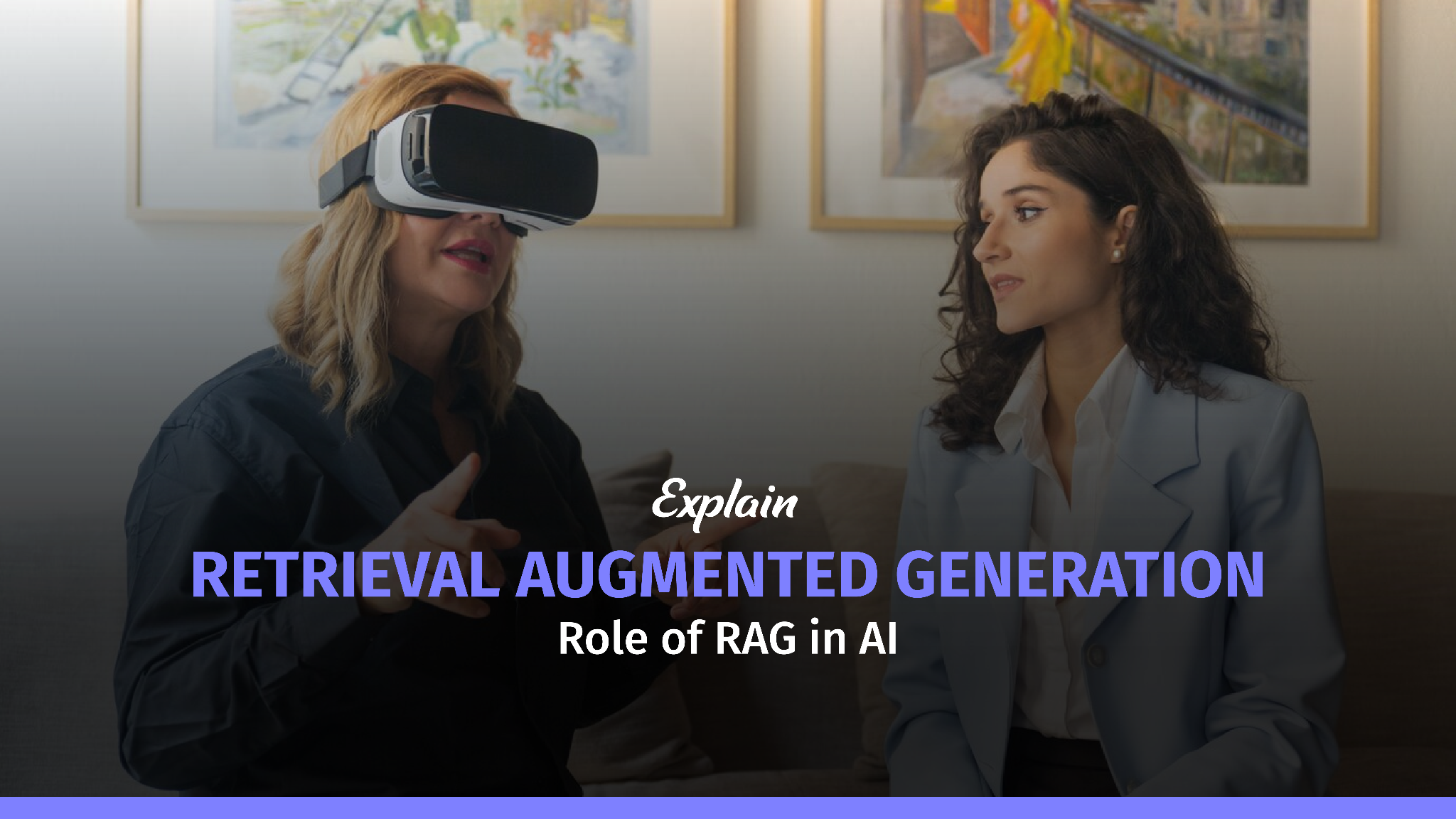Retrieval Augmented Generation (RAG) is a new method in artificial intelligence that makes machine learning models better by mixing two tasks: finding information and creating text. This approach helps AI systems use outside sources of knowledge, so their answers are accurate, relevant, and up-to-date, unlike older models that only use what they learned before. It allows AI to provide detailed answers based on the latest information. So, this article will explain what RAG is, how it is important in AI. It will also explain where it can be used, showing its big impact.
What is Retrieval Augmented Generation (RAG)?
It is a method that combines two important techniques: retrieving information and generating text. RAG uses outside sources of knowledge to make the text it creates more accurate and relevant. This is especially helpful when the model needs to give detailed and correct answers based on a lot of information.
In traditional models like GPT-3, the system creates text based only on what it learned during training. Sometimes, this can lead to incorrect or old information. Retrieval augmented generation solves this problem by adding a way to find and use relevant documents or data from an external source. This means the model can produce answers that are not only clear but also based on real and up-to-date information.
Read: 5 Ways Workflow Automation Can Boost Your Business Efficiency
What is the Role of RAG in AI?
The role of RAG in artificial intelligence is very important and has many benefits. Here’s how RAG helps improve AI systems:
- Better Accuracy: RAG makes sure that the information it provides is current and relevant, which helps reduce mistakes.
- Relevant Answers: By finding the right documents, RAG can give answers. The answers match what users are asking, making the experience better for them.
- Handles Large Data: RAG can work with a lot of information at once. Which is great for situations where quick data retrieval is needed.
- Flexible Use: Because Retrieval augmented generation combines two methods. It can be used in many different areas, like helping customers or creating content.
How RAG Works?
The Retrieval augmented generation system has two main parts: a retriever and a generator:
- Retriever: This part finds and collects important documents or information from a set database. Generally, it uses methods like searching for similar meanings or matching keywords to get the best data based on what the user asks.
- Generator: After the retriever gets the relevant information, the generator takes that data and creates a clear and suitable response. This part of the system can write text that sounds like a human based on the information it found.
In short, the combination of these two parts makes RAG a strong tool in AI. By mixing retrieval and generation, RAG can create high-quality answers that are both helpful and interesting.
Applications of RAG
RAG has many different uses in AI. Here are some important examples:
- Customer Support: In customer service, RAG can help provide quick and accurate answers to customer questions. By finding the right information from a knowledge base, AI chatbots can give responses that solve specific customer issues, making them happier and speeding up response times.
- Content Creation: Retrieval augmented generation can help writers by giving them useful data and insights. For example, a writer looking into a topic can use a RAG tool to find articles, studies, and other resources. They can then combine into a well-informed piece of writing.
- Educational Tools: In schools, RAG can improve learning by giving students information that answers their questions. For instance, if a student asks about a certain historical event. RAG can provide a detailed answer with important facts and context from a large database.
- Research Assistance: Researchers can use RAG to quickly find important studies and data. By retrieving relevant articles, RAG helps researchers stay updated on the latest news in their field. That is making it easier for them to make informed choices.
RAG in AI Example
To show how it works well, imagine a user asks an AI system, “What are the latest advancements in renewable energy?”
In a regular AI model, the system would create an answer based on what it learned before, which might be old or incomplete. But with RAG, the system first finds the newest articles and studies about renewable energy. Then, it combines this information to give a clear and accurate answer, helping the user get useful insights.
Conclusion
In conclusion, Retrieval Augmented Generation (RAG) is an advanced AI framework that combines the strengths of large language models (LLMs) with external knowledge sources. Unlike traditional models that rely solely on pre-trained data, RAG fetches real-time, relevant information during a task—boosting accuracy and reliability. This approach plays a vital role in enterprise AI, chatbots, search engines, and research automation, where up-to-date responses matter.
To truly grasp how RAG reshapes modern AI solutions, learners can explore a dedicated Generative AI Online Course by E&ICT, IIT Guwahati. The course covers architectures like RAG, their working, and real-world use cases. It also offers hands-on projects, expert-led sessions, and industry-relevant insights, equipping you with the skills needed to build smarter, context-aware AI applications.



